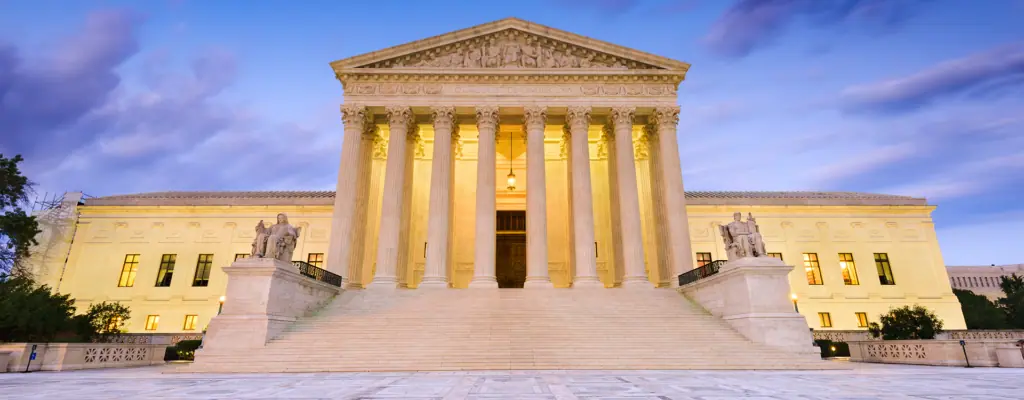Brendan Clegg is a partner at Luse Gorman, PC, in Washington, D.C. He represents banks, their directors and officers in regulatory matters, investigations and enforcement actions involving federal and state bank agencies and the Consumer Financial Protection Bureau. He was previously an enforcement attorney at the Office of the Comptroller of the Currency.

Supreme Court Decision Signals Changes for Bank Agency Enforcement Processes
The SEC v. Jarkesy opinion has considerations and implications for any bank, director or officer facing a potential bank agency enforcement action.
Brought to you by Luse Gorman, PC

The Securities and Exchange Commission in 2013 initiated an enforcement action against George Jarkesy, a hedge fund manager, and Patriot28, the fund’s investment adviser. The SEC alleged that they had violated anti-fraud provisions of federal securities laws, seeking civil penalties and other remedies. The case was brought before an in-house administrative law judge (ALJ) at the SEC rather than in federal court. After the ALJ’s decision, the SEC imposed a $300,000 penalty, required the defendants to disgorge earnings and prohibited Jarkesy from participating in the securities industry. The defendants appealed to the U.S. Court of Appeals for the Fifth Circuit, which vacated the order.
The Decision
The Supreme Court held that the Seventh Amendment entitles a defendant to a jury trial when the SEC seeks civil penalties for securities fraud under federal securities laws. The Supreme Court’s six-to-three decision turned on whether the claim was “legal in nature,” regardless of whether it derives from a specific statute or regulation. The justices considered the remedy being sought: civil penalties. Because the penalties sought were punitive, the SEC’s claim was legal in nature. The decision focused on the statutory factors relevant to the penalty assessment and to the tiering scheme that determines the penalty amounts. The reasoning was also premised on the fact that the causes of action bore a close resemblance to common law fraud claims.
The Supreme Court denied the government’s argument that a “public rights” exception to the jury trial requirement applied, noting the federal judiciary’s long history of handling fraud claims.
Relevant Considerations
On its face, Jarkesy does not extend to agencies other than the SEC or even to actions other than federal securities fraud claims seeking civil penalties. But any bank, director or officer should consider how the decision may be used to seek a federal jury trial, instead of defending before an ALJ.
The following are key questions:
- What is the nature of the government’s claim and can it be analogized to a common law claim? Bank agency claims alleging fraud seem to align with Jarkesy. Other allegations that can be analogized to fraud claims, even if not labeled fraud, may also fall within Jarkesy’s scope. In contrast, causes of action that derive from novel regulatory schemes administered by the agencies to address areas of modern banking business would seem to fall outside Jarkesy’s scope.
- What is the nature of the remedy being sought? Bank agency actions seeking civil money penalties will align with Jarkesy, especially because the relevant statute increases the penalty based on certain aggravating factors, such as impact to the institution or the defendant’s knowledge. Other actions, such as prohibitions and removals, may be analogized to civil penalties because they are intended to be punitive. Cease-and-desist orders (C&D) may be differentiated because they are often remedial. Depending on the terms and the effects on the recipient, courts may find C&Ds to be punitive as well.
- How complex are the issues? Complex bank agency regulations may require a specialized ALJ. The Supreme Court noted that federal judges are familiar with fraud claims, so other common claims — such as fiduciary duty breaches — are more likely to fall within Jarkesy’s scope, as courts regularly deal with these concepts in non-banking contexts.
Practical Implications
The calculus that every bank or individual defendant goes through in deciding whether to consent to a proposed action will materially change because of Jarkesy. Practical implications from the decision on the bank agency enforcement process include:
- Limitations on banking agencies pursuing cases in federal court, which may hold up active investigations and matters while they evaluate Jarkesy.
- Impacts on specific allegations made in reports of examination because, if they could be analogized to a common law claim and those allegations later serve as the basis for an action, defendants may seek to push those claims to federal court.
- Discovery procedures in federal court giving defendants additional rights, including a greater ability to seek information from the agencies.
- Federal court proceedings significantly increasing costs for the agencies to pursue enforcement actions, impacting decisions to pursue such actions.
- Certain courts potentially developing a more favorable precedent, making the decision of where to file an important consideration.
- The body of case law that the bank agencies have developed through ALJ rulings likely having far more limited precedential value in federal court.
- Issues that are more or less settled in the bank regulatory world, such as the prohibition on disclosure of confidential supervisory information, or the overriding of attorney-client privilege in agency requests for documents, potentially coming under increased judicial scrutiny.


